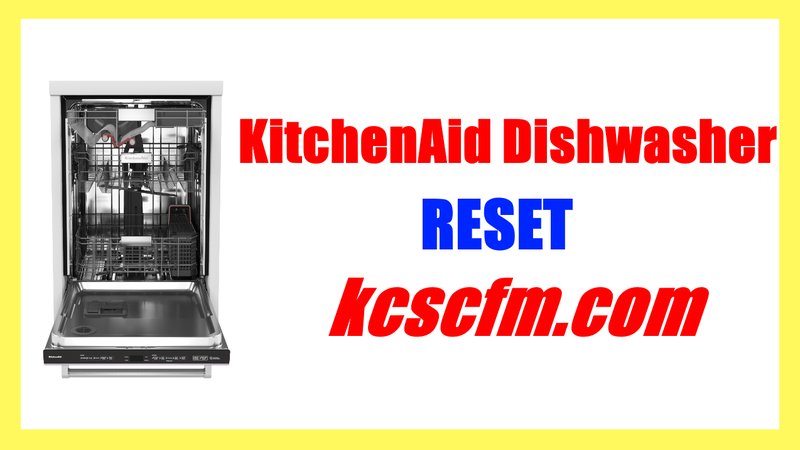
The E1 error code on your KitchenAid dishwasher usually indicates a problem with the machine’s drainage system, often implying that the unit is not draining water as it should. But before you panic and think about buying a new one or calling for expensive repair services, there is some good news! Sometimes, just like rebooting your computer can fix those pesky glitches, resetting your dishwasher might be the simple solution you need for this issue. Let’s dive into what this error means and whether a reset might be your saving grace.
Understanding the E1 Error Code
So, what exactly is error code E1? In the world of dishwashers, this code is a nudge that something’s amiss with the appliance’s ability to remove water. Imagine trying to drain a bathtub with a clogged pipe—it just won’t work efficiently. Similarly, your dishwasher signals E1 when it “senses” that the water is not leaving the tub as it should. This could be due to a blockage, a malfunctioning pump, or a kinked hose.
You might be wondering, “Why does this happen to my dishwasher?” Well, like anything else, dishwashers require some TLC to run smoothly. Over time, bits of food, soap residue, and even hard water minerals can accumulate in the drainage system. When that happens, these bits can create obstacles that block the water flow, much like leaves can clog a gutter.
But rest assured, the E1 error doesn’t mean your dishwasher is beyond repair. Quite often, it’s just alerting you to a simple fixable issue, and understanding what’s causing the error is the first step toward resolving it. So, let’s consider whether hitting the reset button can indeed wipe away that E1 code.
The Reset Solution: Simple and Effective?
Here’s the deal: resetting your dishwasher is akin to giving it a fresh start. Think of it like restarting your phone when an app is acting out—it clears out minor glitches and resets the system. In many cases, this could just be the quick fix you need to clear that E1 error and save you from unnecessary repair costs.
To reset your KitchenAid dishwasher, start by turning off the power. You can do this by unplugging the unit or switching off the circuit breaker dedicated to your kitchen appliances. Then, wait a few minutes to give your dishwasher a chance to clear any settings. After this short pause, restore the power and try running the machine again to see if the error disappears.
But keep in mind, while a reset is a fantastic first step, it might not be a one-size-fits-all solution. If the error persists, there might still be an underlying blockage, requiring a bit more investigation. However, a reset can sometimes act like a breath of fresh air for your machine, giving it the kickstart it needs to function properly.
Troubleshooting Beyond the Reset
Okay, so you’ve reset the dishwasher, but that pesky E1 error won’t vanish. What next? This is where we roll up our sleeves and do a little detective work. First, let’s check the parts that might be causing the blockage. Start by examining the dishwasher’s filter and drain hose for any obvious clogs. It’s much like fishing out leaves from the gutter—clear the path, and the water flows smoothly.
Next, inspect the pump. If it’s faulty or blocked, it won’t be able to push out the water effectively. You might need to remove the lower rack and spray arm to access it, so it’s a good idea to consult your dishwasher’s manual or a how-to video online if you’re not feeling confident.
Lastly, if after checking these elements, the issue remains unresolved, it might be time to call in a professional. There could be an issue with internal components that require expert attention. However, don’t worry; even if the error seems persistent, professionals are equipped to handle such technical aches.
Preventing Future E1 Errors
Now that you’ve got your dishwasher running smoothly again, let’s talk prevention. After all, keeping that E1 error at bay is the ultimate goal, right? Much like maintaining a car or a garden, taking small, regular actions can keep your dishwasher in tip-top shape.
Firstly, make it a habit to clean the filter regularly. A quick rinse under tap water can help remove food particles before they have a chance to cause trouble. Also, be mindful of what goes into your dishwasher; scrape dishes to remove large food chunks and avoid loading non-dishwasher items that could break and block the system.
Another handy tip is running a hot water cycle every now and then, with a splash of vinegar or a dishwasher cleaner. This helps to clear away any build-up of soap residue or minerals, akin to washing away dirt and grime from a shower screen.
Remember, it’s all about giving a little love to your machine so it can keep serving you well. With these steps, you can potentially avoid future E1 errors and enjoy hassle-free dishwashing days ahead.